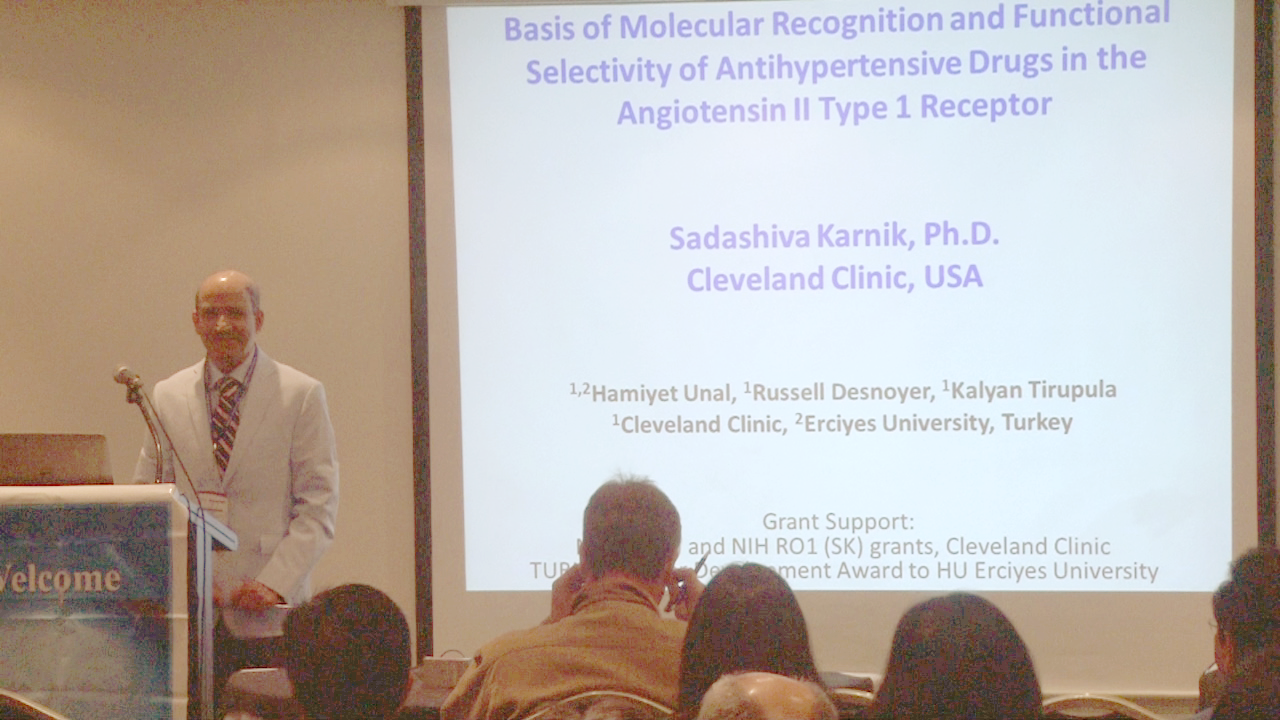
Sadashiva Karnik
Cleveland Clinic, USA
Title: Basis of Molecular Recognition and Functional Selectivity of Antihypertensive Drugs in the Angiotensin II Type 1 Receptor
Biography
Biography: Sadashiva Karnik
Abstract
Angiotensin II type 1 receptor (AT1R) is a G protein-coupled receptor that serves as a primary regulator for blood pressure maintenance. Both peptide and non-peptide ligands of AT1R have been clinically used as anti-hypertensives. The AT1R blockers (ARBs) are widely used non-peptide drugs that share a common chemical scaffold but still display diverse pharmacological properties. ARBs differ from peptide AT1R antagonists in therapeutic efficacies towards cardiovascular etiologies; however structural basis of AT1R modulation by ARBs and peptide antagonists remains unknown. High-resolution crystal structure of the human AT1R in complex with experimental antihypertensive antagonist ZD7155 (at 2.9 Å resolution) lead us to deduce common and distinct contacts with receptor for different ARBs and their structural analogs of diverse pharmacological properties. Specifically our analyses indicate that the common chemical scaffold of ARBs interact with residues Tyr351.39, Trp842.60, and Arg167ECL2 in AT1R. We identified specific interactions of AT1R towards Olmesartan derivatives with inverse agonist, neutral antagonist or agonist activities as well as different ARBs using site-directed mutagenesis. Binding of Angiotensin II but not functionally biased peptide agonist TRV120027 is discriminated by mutations targeting a sodium ion binding site predicted by AT1R crystal structure indicating that functional selectivity of AT1R peptides ligands is allosterically Na-modulated. Based on these studies we will discuss the mechanism of functional selectivity of AT1R-specific ligands which provide fundamental insights into structure-function mechanism and may lead to design of novel drugs.

